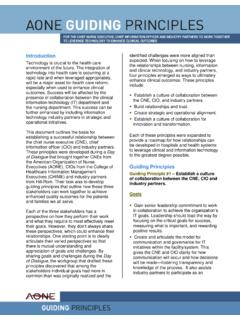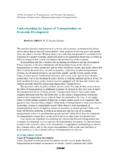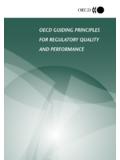Transcription of Exam 2: Dove: Evolution of a Brand
1 Jacqueline Doherty 1. exam 2 : Dove: Evolution of a Brand Jacqueline Doherty Integrated Promotion and Brand Strategy exam 2 . Dove: Evolution of a Brand Jacqueline Doherty 2. exam 2 : Dove: Evolution of a Brand The Beauty Bar Before Unilever transformed Dove into an iconic Masterbrand, it was a functional, recognizable Brand . In order to market a new product to consumers, Dove had a competitive advantage. Introduced as a revolutionary form of soap, Dove swept the market in 1957 when it launched its beauty bar, a new formula. The beauty bar removed Dove from the cognition given to a regular bar of soap. It was not ordinary soap, which was now old-fashioned ; it was a beauty bar that had the ability to moisturize and cleanse while eliminating the usual irritation and dryness received from toilet soap. This differentiation enabled Brand awareness for Dove. Dove immediately identified itself as an honest, natural, and authentic Brand .
2 Dove created a story of a functional product with various added bonuses distinctly different from brands before it. Dove immediately captured important Brand elements. Using a simple dove as its symbol contributed to the recall of its Brand name. The basic colors, white and blue, displayed cleanliness, purity and innocence;. these attributes gave customers the ability to recognize the Brand as natural and honest. The spokes models also displayed natural beauty, while the taglines such as Dove creams your skin while you bathe provided functionality with a sensory, luxury feeling. Original advertisements and publicity provided an abundance of information to consumers. This Brand was offering the effects of soap; however, it was different because it was milder and one-quarter cleansing cream. Even the shape of the bar was new; it was sculptured to fit the hand . The ads used buzz words like rich, moisturizing, creamy, sensational, and lather to give sticky associations to the product.
3 To continuously provide separation from its competitors, Dove never referred to the product as soap, because it was technically not soap at all . These efforts provided the market with an attractive framework of Dove's Brand . For support, Unilever, pioneers in the science of soap-making , guaranteed that Dove was better for the consumer's skin, and reminded them that they could trust Unilever to deliver a quality product. Furthermore, the beauty bar was eventually endorsed for the treatment of dry skin by physicians and dermatologists, showing that the Brand had surpassed awareness and had become preferred by its customers and experts. Consumers had more reason to try the Brand , become satisfied with its delivery, and start to prefer it. Finally, consumers pledged loyalty to Dove because of the functional and added benefits. For 40. years, Dove led the soap market, and had become one of America's most recognizable brands.
4 Consumers trusted Dove to deliver a product that would be good for their skin. Dove had gained positive Brand equity, superior to the generic soap brands, by combining these functional and valued benefits. The Campaign for Real Beauty In 2000, Unilever called on Dove to become a Masterbrand because of its continuous success as a leader in the soap industry. Along with the Masterbrand title, Unilever wanted to enter into other personal care categories. Dove was the perfect candidate for this Brand extension because of its positive Brand equity and its resonance with the market. Unilever realized, however, that Dove would need to enhance its associations past utility for the other products to be successful. In an age where consumers were using brands as staples of themselves, Unilever decided that Dove would need to develop a meaning and stronger identity that its users could relate to and believe in.
5 It was apparent that other personal care brands were giving women phony promises, letting them buy just to attempt to become as beautiful as the models. Dove saw that these promises were unattainable for most women, especially the ones that were consuming their product. After surveying women worldwide, researchers found that only 2% of women actually described themselves as beautiful; the greatest percentage, 31%, identified themselves as natural. Dove had always represented Jacqueline Doherty 3. exam 2 : Dove: Evolution of a Brand natural looking women, so the Brand grabbed this information and spearheaded the Campaign for Real Beauty . The Dove Brand was evolving from its functional beauty bar to an extension of personal care products that meant natural beauty. Evolving the Brand Dove had the awareness it needed as a functional, trusted Brand . As always Dove would continue to deliver a functional, natural, quality product.
6 To support the new products, the Campaign for Real Beauty had to be supplemented with a renewed Brand story, and a marketing communications strategy to go with it. At the core of the media communications strategy was the knowledge, from The Real Truth About Real Beauty: A Global Report , that on average of women surveyed believed that the media and advertising set an unrealistic standard of beauty that most women cannot ever achieve . This information told marketers that Dove should be as honest, natural and authentic as ever. To test out how the public would respond to its expanded story of a Brand fighting against industry standards to sponsor the beauty of real women, The Campaign kicked-off with billboards displaying real, natural women. On the ad, consumers were asked to vote on whether they thought these more ordinary women were outsized or outstanding , fat or fabulous.
7 Dove saw a liability when more people were voting against them, but victory when overall people voted that these women were beautiful. These initial ads gave the public refreshed associations about Dove, and started relating the Brand as attainable, natural and real. The Dove Two Dozen also became spokes models, as they were relatable and admirable public figures who could support and push the Brand . Dove tapped into something that was even bigger than their Brand : the reality that false advertising was causing women to live with low self-esteem. By filming the True Colors ad, Dove had found a way to tug on the emotions of consumers who understood how hard it is to live up to supermodel standards. This ad played once during the Superbowl and got an incredible response. The ad was not the norm of what the thousands of people watching the Superbowl would be used to, they would be caught off guard.
8 It was so powerful that Dove did not show it again; the media stepped in by itself and provided full coverage of Dove's new story. Controversy was sparked and the public became aware of the challenges women face daily because of the beauty industry. Dove embraced this viral publicity and gained influence from it. The short film, Evolution provided consumers with more insight about how fake the beauty industry is. Although it did not show on television, Dove took advantage of Web as a channel to get around three million viewers to receive their message. The film contributed to the strength of The Campaign by rebelling against what culture was accustomed to. As the Brand gained the imagery of a community of real women, customers had a new preference toward the Brand . There was a more emotional connection and understanding between the Brand and consumer. Women used Dove because they believed they were natural, and the product was a way for them to express that.
9 Constantly engaging consumers, Dove decided to launch Real Ads by Real Women . Not only did this give Dove the ability to see how the customers actually perceived their product, they empowered women to be themselves and show what it was like to be a real woman, further enhancing Doves' mission. This positively impacted Brand equity in every way. Women felt like they were expressing their real beauty and sharing their story with fellow real women, they were co-creating with Dove to rebel against the norm. Furthermore, Dove organized the Dove Self-Esteem Fund to engage its consumers more and help to increase the self-esteem of young women. Partnering with the Girl Scouts of the USA brought even more credibility to the campaign. Dove had become an organization that practiced its mission to Jacqueline Doherty 4. exam 2 : Dove: Evolution of a Brand fight for real beauty in everything they did.
10 The company's personality, that of a real, authentic, beautiful woman, was prominent. Dove did not fully control the Brand during The Campaign. By allowing real women and the media to participate in the fight against the fallacies of the beauty industry, they gained credible support while guiding the Brand where they wanted it to go. The Dove Self-Esteem Fund involved more women who wanted to be proactive about changing the misconception of what beauty is, and young women all around the US who were supported by these women. A Unified Brand Story Dove had all the ingredients for a strong Brand story. Marketing sent a constant, unified message that the brands' core values were to deliver a quality product while representing everyday natural, real women. Standing for authenticity, Dove was unique not only because of the quality and value of its product, but for the way it rebelled against the perfectionist driven beauty industry.






